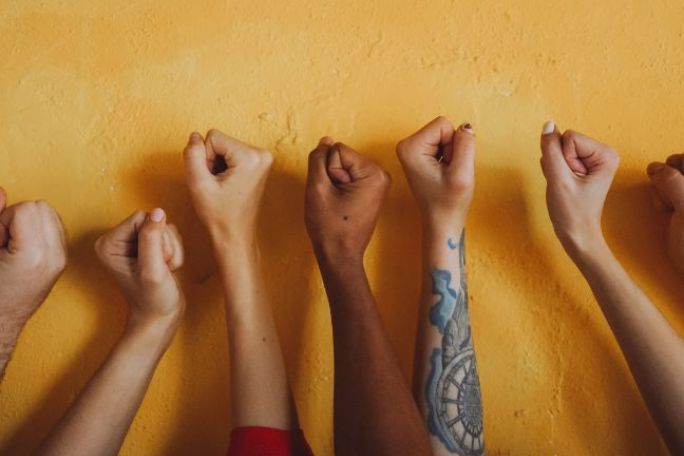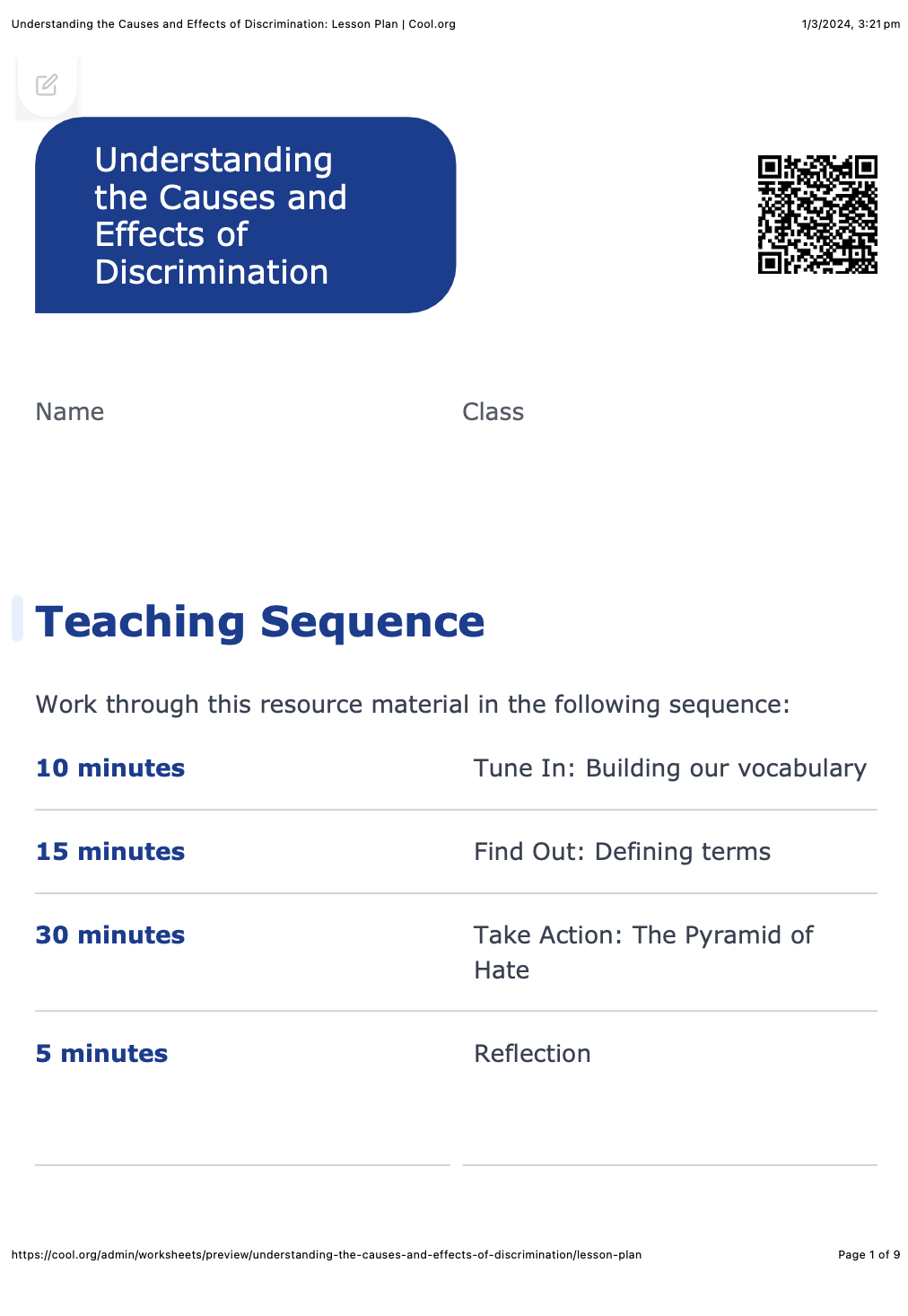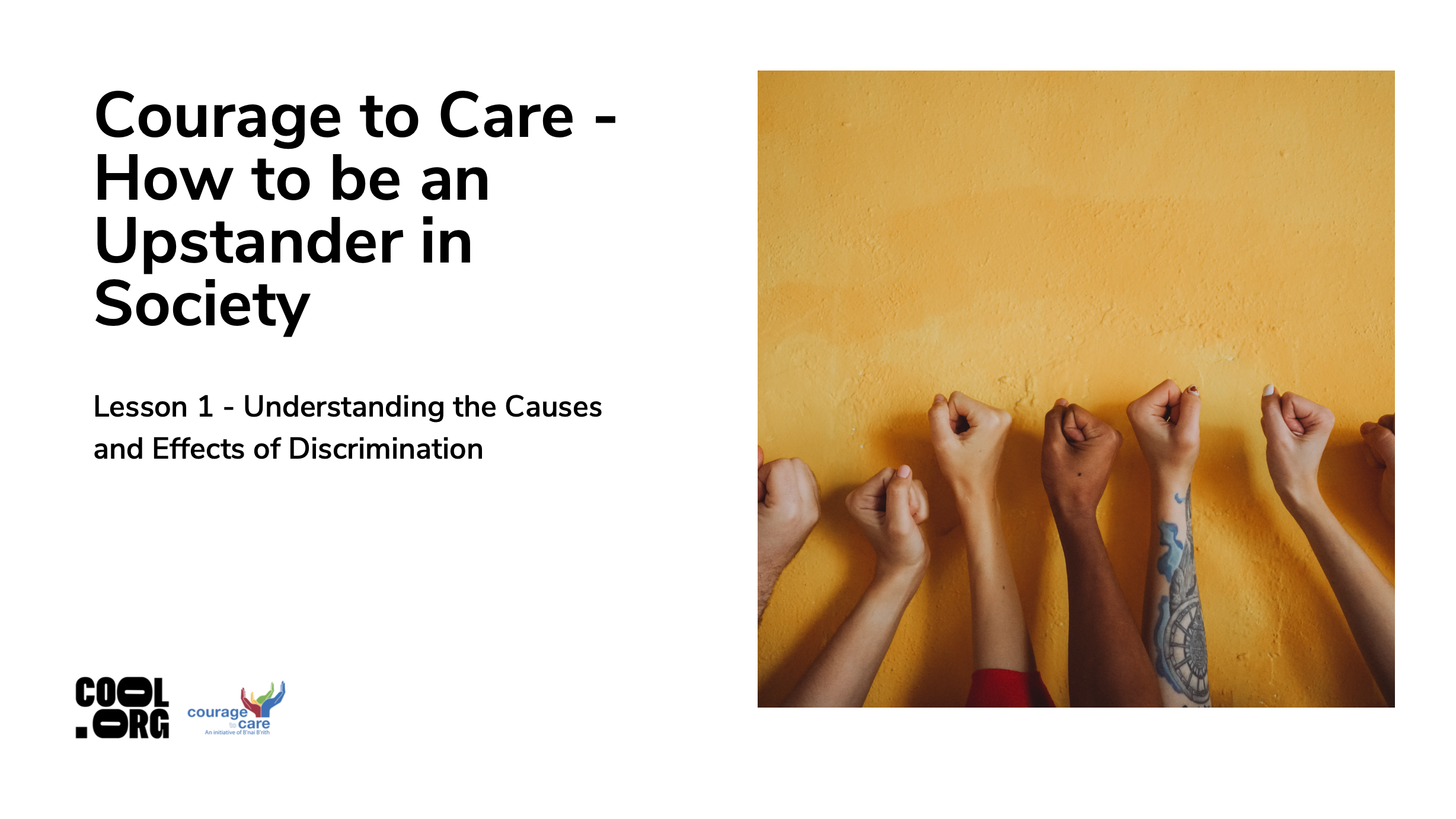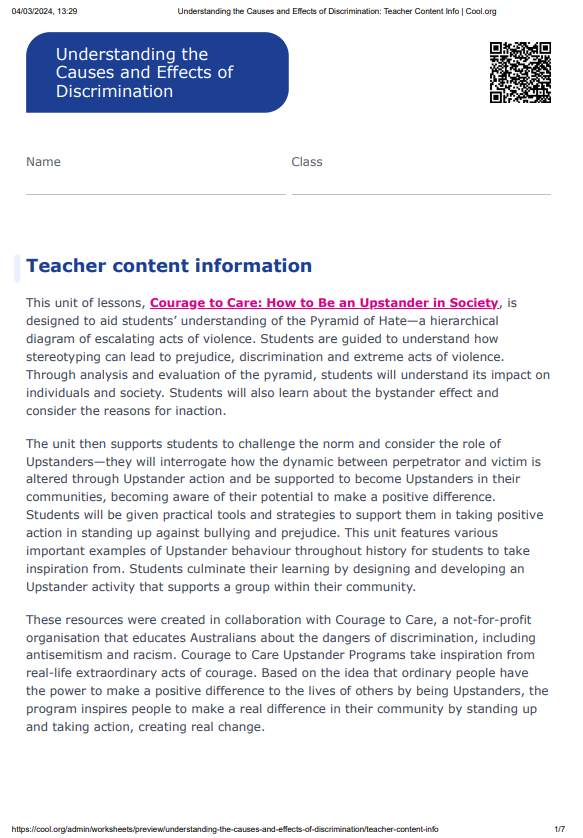Lesson summary
Students will explore the terms used in conversations about discrimination and understand how these terms can be organised into the hierarchical Pyramid of Hate. Students will identify how stereotyping can lead to acts of violence and develop an understanding of these terms as well as their impact on individuals and society.
Learning intentions:
Students will...
- explore terms used in conversations about discrimination, such as stereotyping, prejudice, bias and violence
- understand how these terms relate to each other and form the different levels of the Pyramid of Hate.
Success criteria:
Students can...
- recall the definitions and categorisation of the Pyramid of Hate, which begins with stereotyping and, unchecked, can lead to violence and hate.
Lesson guides and printables
Curriculum links
Select your curriculum from the options below.
Lesson details
Skills
This lesson is designed to build students’ competencies in the following skills:
- critical thinking
- collaboration
- communication
- curiosity
- empathy
- ethical understanding
- reflection
- social skills
Curriculum Mapping
Australian Curriculum (v9.0) content description:
Year 9 & 10 Health and Physical Education
- Evaluate the influence of respect, empathy, power and coercion on establishing and maintaining respectful relationships (AC9HP10P04).
- Propose strategies and actions individuals and groups can implement to challenge biases, stereotypes, prejudices and discrimination and promote inclusion in their communities (AC9HP10P05).
Victorian Curriculum content description:
Year 9 & 10 Health and Physical Education
- Plan, implement and critique strategies to enhance the health, safety and wellbeing of their communities (VCHPEP149)
- Critique behaviours and contextual factors that influence the health and wellbeing of their communities (VCHPEP151)
General capabilities: Ethical Understanding, Personal and Social Capability, Literacy
Relevant parts of Year 9 & 10 achievement standards from the Australian Curriculum: Students can evaluate how attitudes and beliefs about equality, respect, diversity and inclusion influence the nature and quality of relationships. Students propose and justify strategies to manage online and offline situations where their own or others’ health, safety, relationships or wellbeing may be at risk. They apply and evaluate leadership approaches, collaboration strategies and ethical behaviours across a range of movement contexts.
Relevant parts of Year 9 & 10 Health and Physical Education achievement standards from the Victorian Curriculum: Students can analyse the impact of attitudes and beliefs about diversity on community connection and wellbeing. Students identify and analyse factors that contribute to respectful relationships. They compare and contrast a range of actions that could be undertaken to enhance their own and others’ health, safety and wellbeing.
UN Sustainable Development Goals
- Target 4.7: By 2030, ensure that all learners acquire the knowledge and skills needed to promote sustainable development, including, among others, through education for sustainable development and sustainable lifestyles, human rights, gender equality, promotion of a culture of peace and non-violence, global citizenship and appreciation of cultural diversity and of culture’s contribution to sustainable development.
- Target 16.1: Significantly reduce all forms of violence and related death rates everywhere.
Resources Required
- Device capable of displaying audio-visual material
- Graphic organiser: Looks like, feels like, sounds like
- Handout: List of Terms and Definitions
- Stereotypes, Discrimination and Prejudice Factsheets
- Writing materials
Additional Info
These resources were created in collaboration with Courage to Care, a not-for-profit organisation that educates Australians about the dangers of discrimination, including antisemitism and racism. Courage to Care Upstander Programs take inspiration from real-life extraordinary acts of courage. Based on the idea that ordinary people have the power to make a positive difference to the lives of others by being Upstanders, the program inspires people to make a real difference in their community by standing up and taking action, creating real change.
Courage to Care offers face-to-face Upstander Programs at schools in most states. Delivered by teams of skilled and dedicated volunteers, Upstander Programs feature inspiring testimonies from Holocaust Survivor Speakers, promote acceptance of diversity within the community, and transform bystander behaviour by inspiring participants to become Upstanders.
Upstander Programs encourage participants to become aware of their potential to make a positive difference and offer practical tools for standing up against bullying and prejudice by empowering participants to take positive action – in the schoolyard, workplaces, and in our communities. Contact Courage to Care to find out more about booking an Upstander Program in your school.
Level of teacher scaffolding: Low to Medium - Teachers should be familiar with the content presented in the lesson. Teachers should be confident in facilitating general classroom discussions.





Welcome back!
Don't have an account yet?
Log in with:
Create your free Cool.org account.
Many of our resources are free, with an option to upgrade to Cool+ for premium content.
Already have an account?
Sign up with:
By signing up you accept Cool.org's Terms and Conditions(Opens in new tab) and Privacy Policy(Opens in new tab).